Strobilanthes dyerianus
Persian shield, Strobilanthes dyerianus, is a stunning ornamental species that originates in warm, humid Myanmar, where it grows as a tender evergreen perennial.
It is a member of the Acanthaceae family, which consists mostly of flowering tropical flora.
With its unique iridescent purple leaves, S. dyerianus had no difficulty attracting the attention of US gardeners, and is now grown here as an annual, perennial, and houseplant.
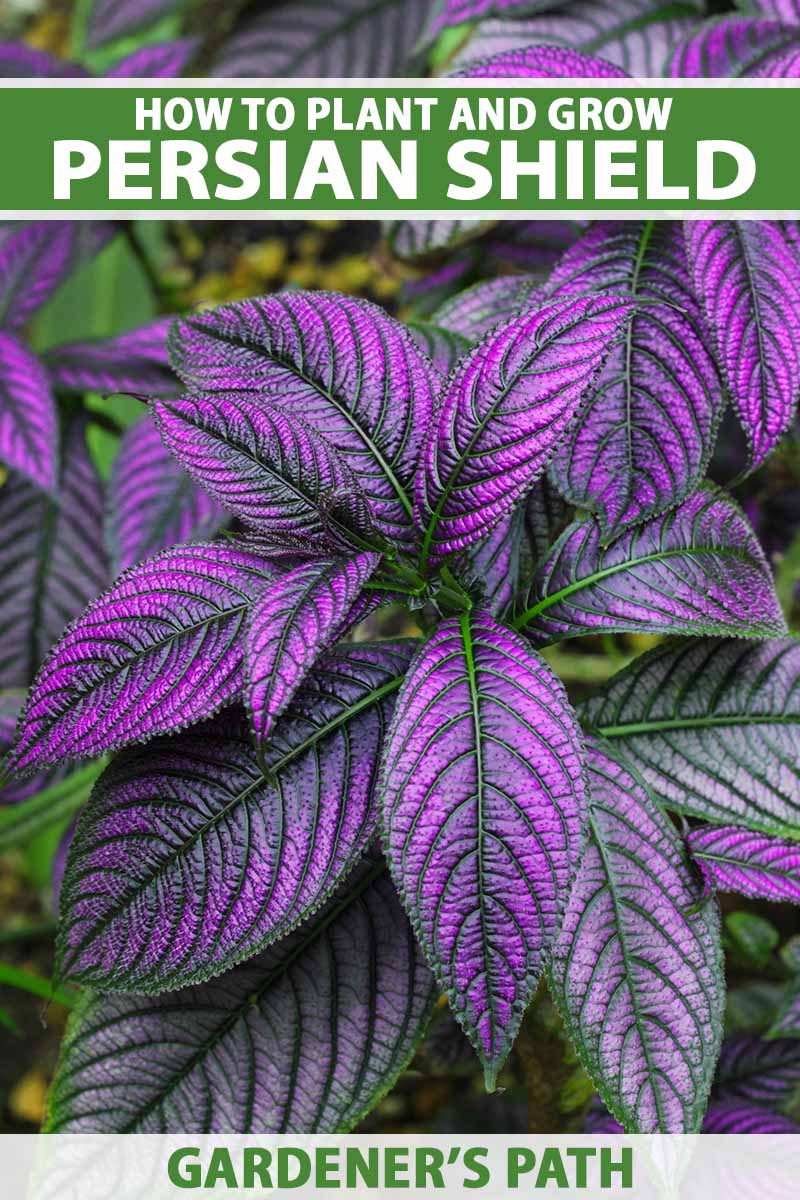
We link to vendors to help you find relevant products. If you buy from one of our links, we may earn a commission.
In this article, you will learn all you need to know to cultivate this delightful tropical foliage outdoors in USDA Hardiness Zones 10 to 11. It may also be grown as an indoor houseplant in all locales.
Here’s what we’ll cover:
What You’ll Learn
Let’s start with a little background.
Cultivation and History
Tropical Persian shield, aka royal purple plant, thrives on heat and humidity, yielding its most brilliant color in bright, indirect sunlight and partially shaded locations. It prefers temperatures above 60°F.
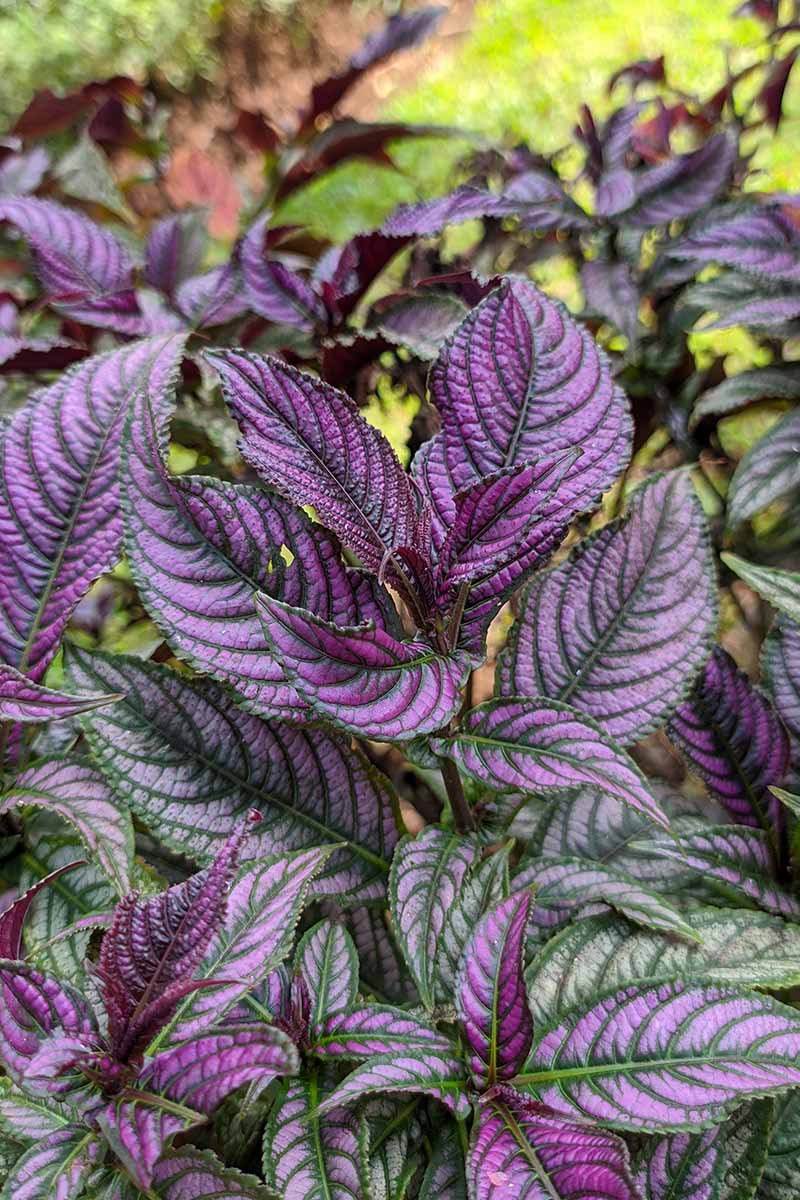
The characteristic broadleaf foliage positively shimmers. Neon shades of purple veined with green seem to be overlaid with a silver gloss.
The growth habit is upright with leaves that are lance-shaped and measure six to eight inches long. Stems are soft and may exceed three feet in height. Over time, they may become woody.
Small, tubular, cone-shaped blue flowers, reminiscent of Virginia bluebells may bloom in season, but these are a rarity. The reason is not entirely understood, but is believed to be an example of “masting” behavior, in which blooming is sporadic, but profuse when it occurs.
This botanical phenomenon makes it impossible for wildlife to depend upon the seeds for food, as they are not always available.
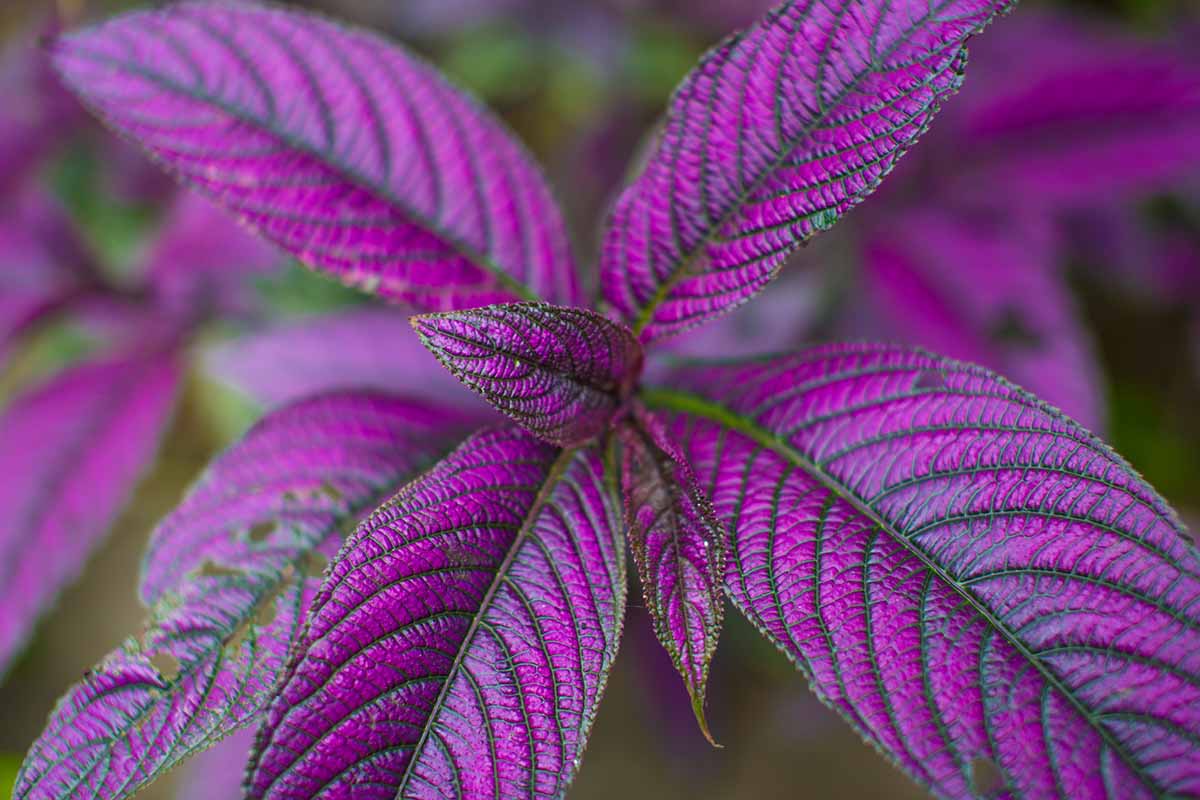
In cooler regions, Persian shield grows as a summer annual, often failing to exhibit its most vibrant color, and dying off with the first frost.
Despite the frequent lack of blooms, the Latin Strobilanthes is an apt description because it means coneflower.
The species name, dyerianus, recognizes the botanist who oversaw the Royal Botanic Gardens at Kew at the turn of the last century, Sir William Turner Thiselton-Dyer.
S. dyerianus was undoubtedly introduced to Europe by flora hunters of the era, and became part of the famous Kew collection.
From Europe, Persian shield made its way into American Victorian gardens and households at a time when tropical foliage was enjoying its first North American heyday.
Propagation
To grow S. dyerianus, you’ll need to take a soft stem tip cutting from a friend’s plant, or purchase a potted one from a nursery. Seeds are not readily available.
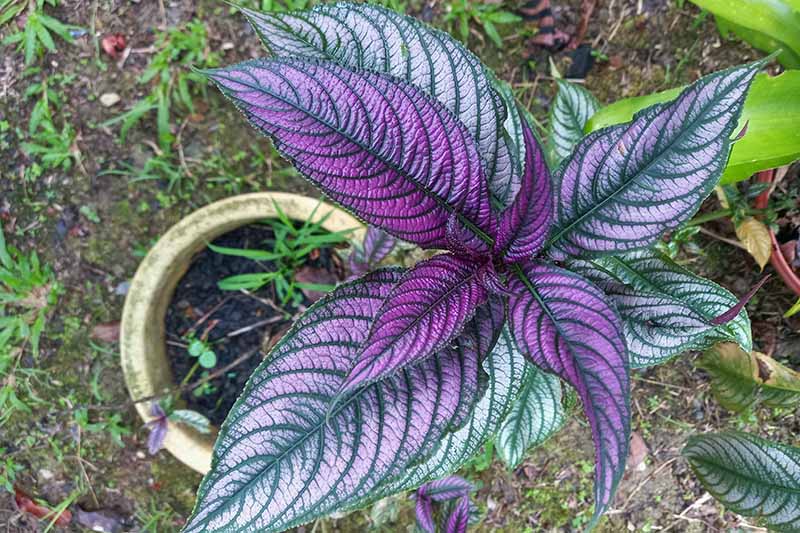
Here’s how to get started.
From a Soft Stem Tip Cutting
To start with a cutting from existing foliage, cut a length of stem, measuring from the growing tip down about four or five inches. If blooming has occurred, wait until the last flower drops and a flush of new growth appears.
Be sure to cut about one-quarter of an inch above a leaf node, the place where leaves originate.
Remove the bottom pair or pairs of leaves to reveal about three inches of bare, leafless stem.
Place the bare stem in a narrow clear container containing two inches of water. Change the water daily.
Once roots grow to at least an inch long, transplant the cutting to a well-draining vessel filled three-quarters of the way with potting soil, or plant it out in the garden.
Be sure to take mature dimensions into account when growing in the garden or outdoor containers. Plants need between one and three feet to spread out, and a soil depth of about 12 inches to support healthy root development.
Bury about one inch of the rooted stem in the soil, so the crown, where the roots and stem meet, is buried. Tamp the soil down securely.
Maintain even moisture by watering when the top three to four inches of the soil feel dry. Avoid letting pots dry out completely, but don’t oversaturate the potting medium.
Nursery Pot Transplanting
For outdoor container gardening, choose a well-draining vessel with a depth of at least 12 inches. Fill it three-quarters full with organically-rich potting soil.
For transplant to the garden, work the ground soil to a depth of eight to 12 inches. Amend with compost as needed to provide organically-rich earth that drains well.
Unpot the plant and carefully detangle the roots if necessary.
Place the contents of the pot into the ground or container so that it sits at the same depth it was at in the pot.
Tamp the soil firmly over the roots and around the stems, and water well.
Maintain even moisture by watering when the top three to four inches of soil feel dry.
How to Grow
In Zones 10 to 11, you can cultivate your plant year-round in the ground or in outdoor containers, for evergreen foliage.
If you are in Zone 8 or 9, you may find that the foliage withers and dies at season’s end, but the roots remain alive and sprouts appear again each spring.
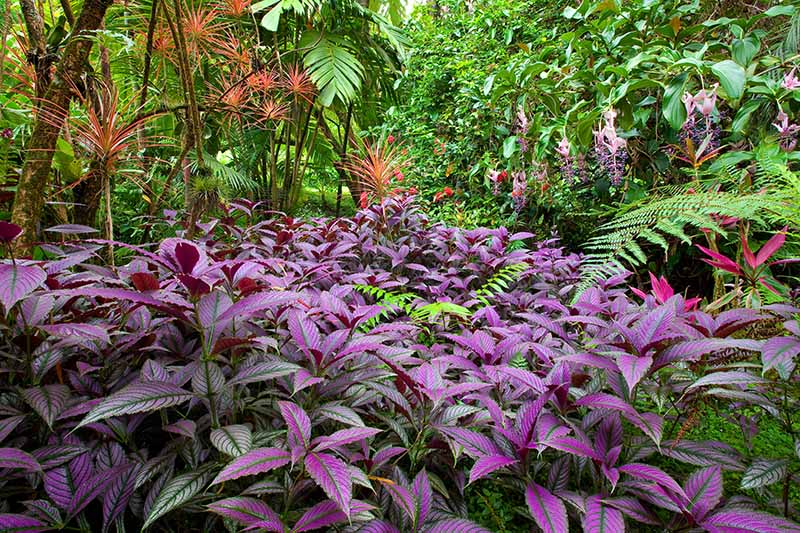
This is especially likely when you apply a three-inch layer of mulch over the root zone, as we will discuss in the pruning and maintenance section below.
For those of us in cold zones, like me, this species grows as an annual that dies back in its entirety, roots and all, and doesn’t return.
To grow S. dyerianus in a container, select an indoor location with bright, indirect sunlight, or an outdoor one with dappled sun to part shade.
If the light is too bright, the leaves will appear pale and may even scorch.
For container gardening, use a good quality, organically-rich potting soil and a container with adequate drainage holes and a depth of at least 12 inches.
Keep the soil moderately moist by watering when the top third of the soil feels dry to the touch.
A moisture meter can help you to gauge when water is needed. Indoor pots may need water more than once a week, so check daily.
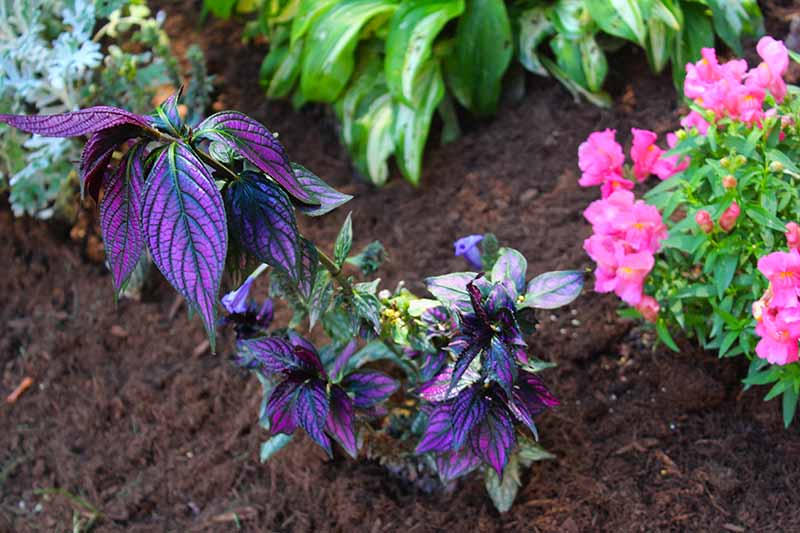
For garden growing, work the ground to a depth of eight to 12 inches.
Amend the soil as needed with organically-rich compost or aged manure to achieve a loamy consistency that drains well and has a pH in the range of 5.5 to 7.5.
As described above, secure a rooted cutting or nursery plant firmly in the soil. Bury the cutting about one inch deep, or set nursery plants at the same depth they were growing in their containers.
Water weekly in the absence of rain, using a moisture meter as your guide.
Fertilize at planting time and midway through the growing season, using a liquid plant food diluted to 50 percent.
Growing Tips
The secrets to successful Persian shield cultivation include:
- Starting with rooted cuttings or nursery stock.
- A location or container with organically-rich soil that drains well and has fairly neutral soil acidity.
- Maintaining even moisture, neither overwatering nor allowing the soil to completely dry out.
- Fertilizing regularly with half-strength liquid plant food to support foliar growth.
Pruning and Maintenance
S.dyerianus is a low-maintenance species. If it gets leggy, pinch or snip the stems back just above a leaf node, to promote bushy, compact growth.
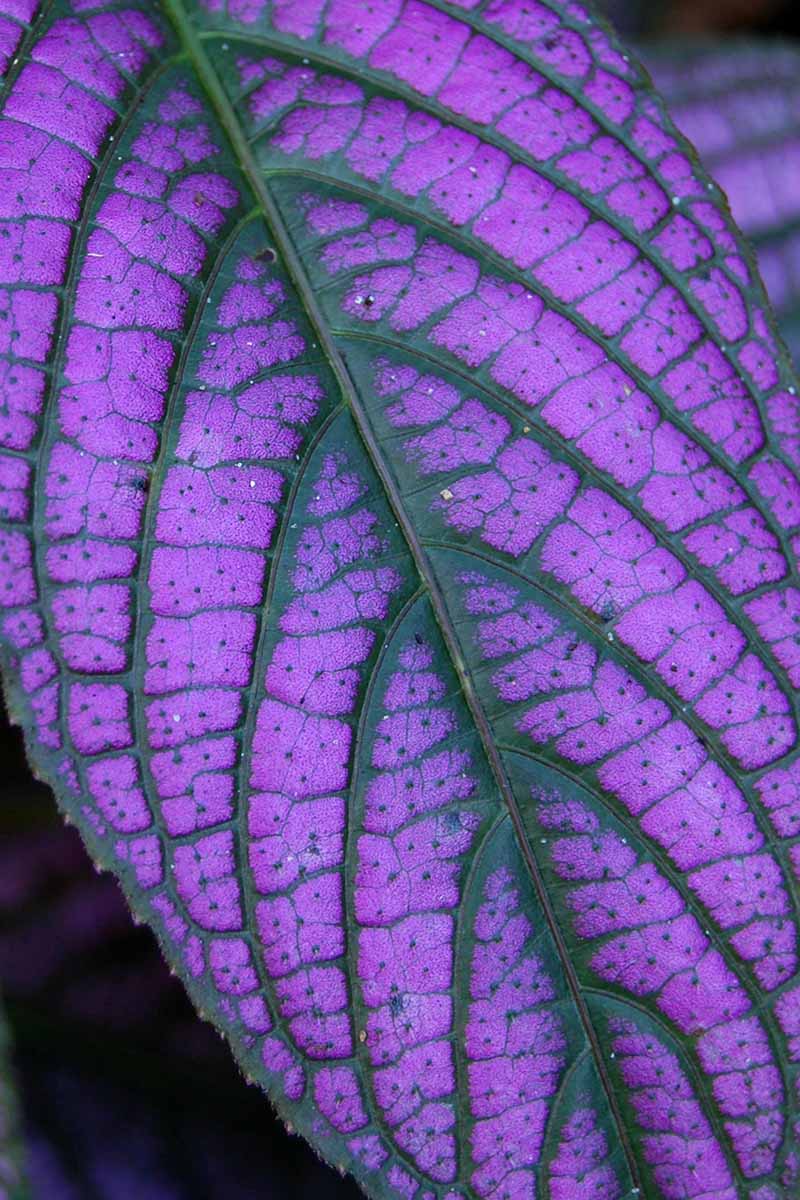
In addition, if a plant gets too hot and/or dry, pinch off leaves that have scorched patches or brown tips, to redirect energy toward healthy growth.
Similarly, if a stem or leaf breaks, snip it off, as open wounds increase vulnerability to pests and pathogens.
If your plants experience a widespread pest infestation, or have old woody stems, you may want to take some unaffected soft stem tip cuttings to propagate new ones before disposing of the parent plant.
And finally, to try to winter over in Zone 8 or 9 for perennial growth, first remember to take a few cuttings during the summer to root in water, in case of failure.
When the foliage dies with the first frost, remove the wilted debris and apply a three-inch layer of mulch over the root zone.
If you are growing in a container, you can wrap the entire pot in burlap and place it in a sheltered location until spring.
Alternatively, you can dig up entire plants before the first frost to winter over as houseplants. Read more about growing Persian shield indoors in our guide. (coming soon!)
Where to Buy
Persian shield is available in nurseries and online for both indoor and outdoor cultivation.
With diligent care of a quality starter plant, you can achieve mature dimensions of up to three feet tall and wide. Container growing is more likely to result in smaller stature than in-ground cultivation.
As it matures, you can take soft stem cuttings to multiply your investment for keeping or giving as gifts to your gardening friends.
Find a set of three Persian shield starter plants from Home Depot in four-inch pots.
Managing Pests and Disease
Persian shield is not particularly prone to pests or disease. However, sometimes there are issues.
Common culprits include aphids, fungus gnats, and spider mites.

Aphids are sap-suckers that feed on foliage. If you catch them early, a firm spray with the hose may be all you need to dislodge and destroy them.
More extensive infestations may be treatable with an application of organic insecticidal neem oil.
Fungus gnats are soilborne flying insects that seem to appear as if by magic in overly wet soil, particularly in potted plants. A few sticky traps and a reduction in watering will usually take care of the problem.
Spider mites are sapsuckers that feed on plants that are too dry. A rinse with the hose, application of a pyrethrin-containing insecticide, and regular watering usually do the trick to remedy an infestation.
It’s important to maintain plant health and avoid pests, as in addition to being menaces themselves, many carry diseases that can be transmitted via their mouthparts.
You are not likely to encounter any common plant diseases when cultivating S. dyerianus.
Best Uses
With its vivid silvery-purple hues, Persian shield makes a bold perennial statement in warm-region gardens.
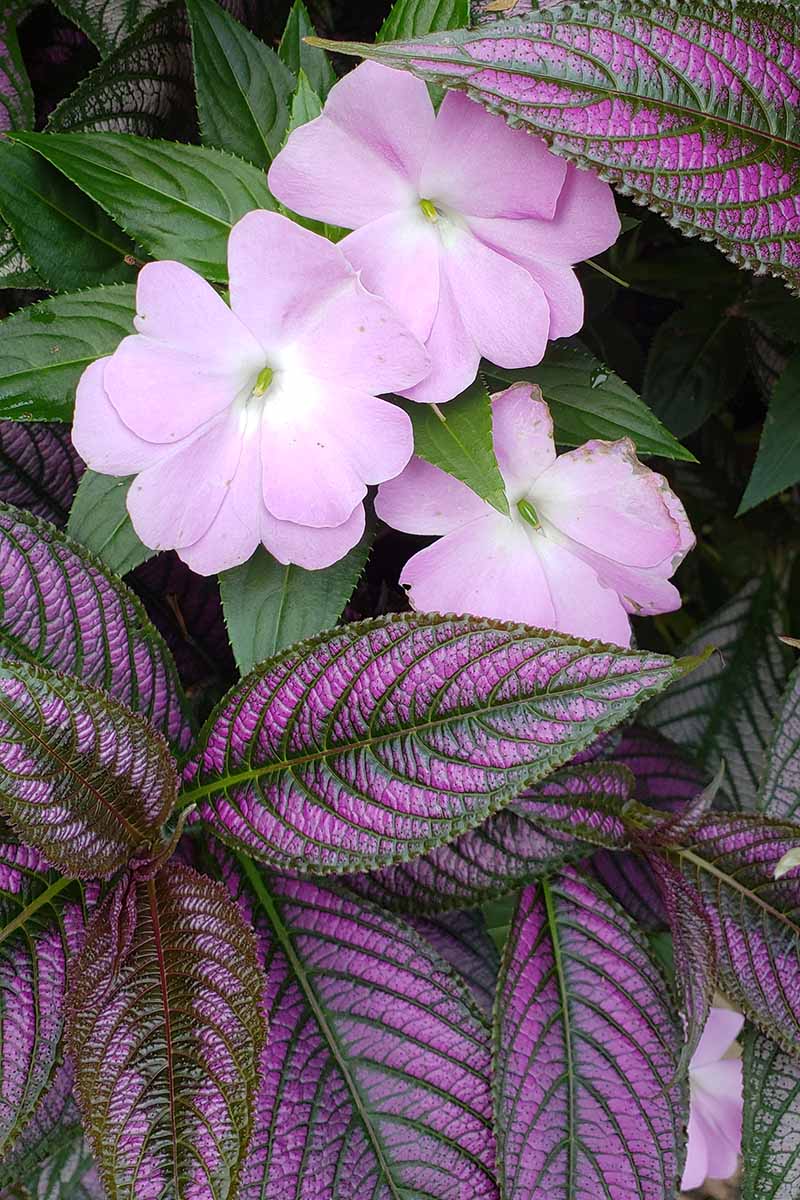
It also pairs well with species that have similar requirements for dappled sun to partial shade, and organically-rich, well-draining loam.
Try it in mixed beds that contain vibrant pink and green caladiums and impatiens.
Place it in containers with trailing lime green sweet potato vine, pink snapdragon, and silvery green dusty miller.
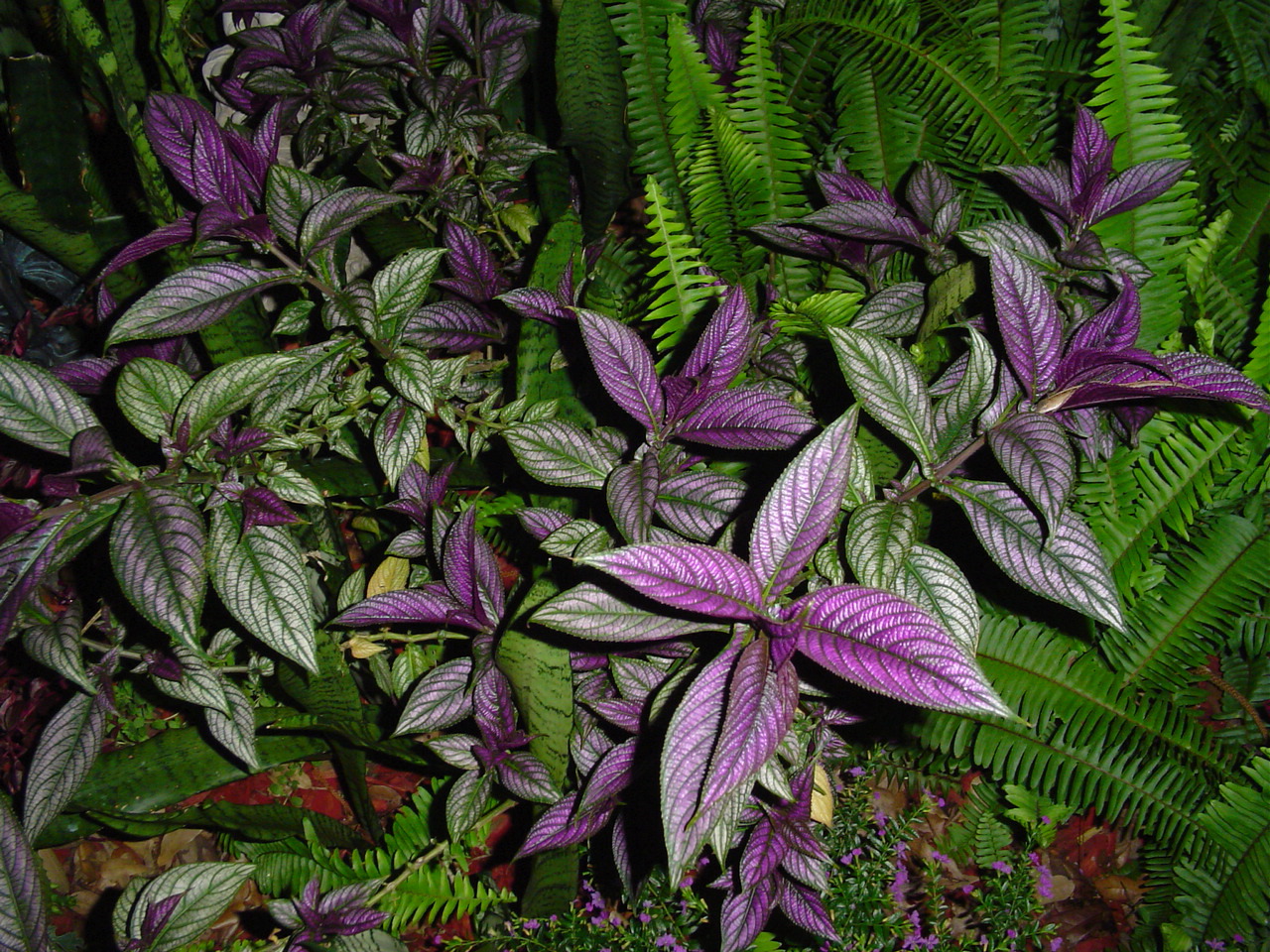
And plant it on the sun-dappled fringes of gardens overflowing with ferns and snake plants, where their green textures make the purple foliage stand out dramatically.
Indoors, it’s quite a conversation-piece where the temperature is at least 60°F, the sun is indirect, and the moisture is ample but not excessive.
Quick Reference Growing Guide
| Plant Type: | Tender evergreen perennial | Flower/Foliage Color: | Lavender blue/green and iridescent purple |
| Native to: | Myanmar | Water Needs: | Medium |
| Hardiness (USDA Zone): | 10-11 (perennial) | Soil Type: | Organically-rich loam |
| Exposure: | Bright indirect sun to part shade | Soil pH: | 5.5-7.5 |
| Spacing: | 3 feet | Soil Drainage: | Well-draining |
| Planting Depth: | Bury crown | Companion Planting: | Caladium, dusty miller, fern, hosta, impatiens, snapdragon, sweet potato vine |
| Time to Maturity: | 3-5 years | Uses: | Beds, borders, containers, houseplant |
| Height: | 1-3 feet | Order: | Lamiales |
| Spread: | 1-3 feet | Family: | Acanthaceae |
| Growth Rate: | Fast | Subfamily: | Acanthoideae |
| Maintenance: | Low | Genus: | Strobilanthes |
| Common Pests and Diseases: | Aphids, fungus gnats, spider mites; diseases uncommon | Species: | Dyerianus |
Versatile and Vibrant
Persian shield has exceptional foliage that may be enjoyed in numerous ways.
Let it reach full height, so its leggy clumps can sprawl recklessly across a garden bed, providing a gleaming, informal backdrop for foreground specimens.

Or, pinch it back, sacrificing height, but achieving a bushy, compact profile suited to formal borders and well-behaved mixed groupings.
And finally, if you’re in a cool climate zone, bring plants indoors for the winter, or keep them inside year-round as easy-to-tend houseplants. Pinch them back as desired to maintain shape.
If you live in the southern part of the United States, you may have the pleasure of seeing the blue blossoms of Persian shield in your autumn or winter garden.
For additional late-blooming flower ideas, consult our article on fall annuals for the south.
Do you grow Persian shield? Are you cultivating it indoors or outdoors, and in containers or in the garden? Share your experiences with this unique tropical species in the comments section below.
If you found this article informative and would like to read more about cultivating vibrant foliage plants, we recommend the following:
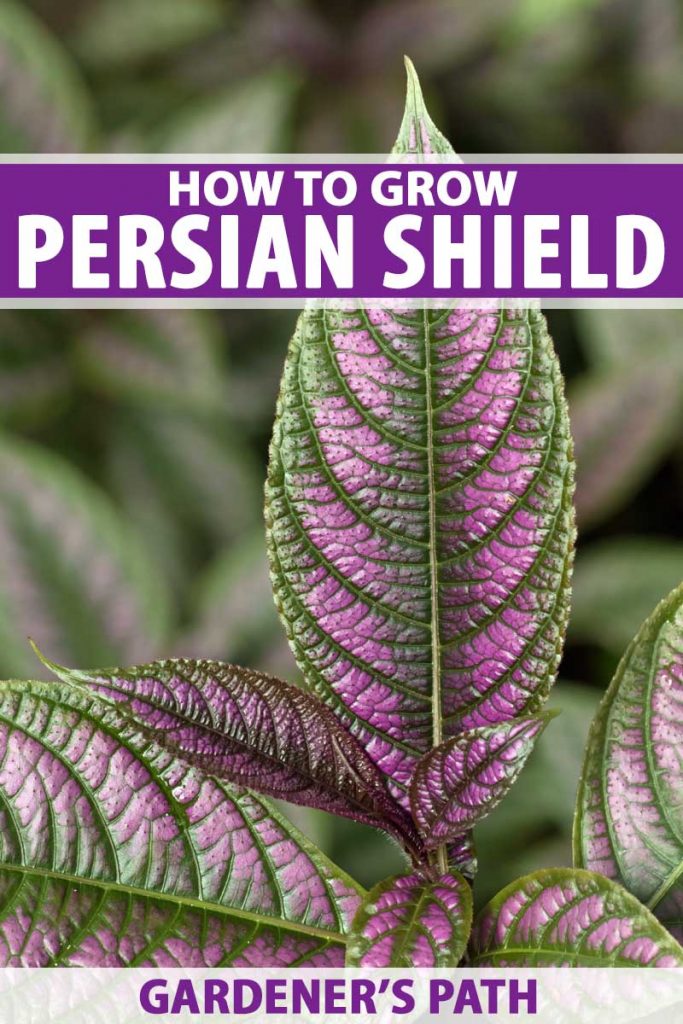

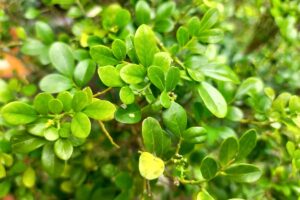
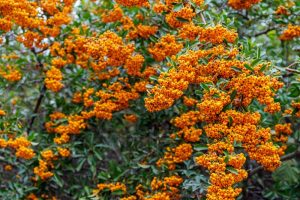

Hi, my name is Reid Wauchope and i have had one of these Persian shields for about two years now and I have been wanting for a long time to get it vibrant as it was when I first bought it. It’s percing up to the sky looks happy but is in peat moss soil and direct light being fed vf-11 almost every watering. The color dies off about two or three leaves down the plant from the top that is a semi vibrant purple. So I guess I’m asking should I transplant in new dryer soil along with indirect… Read more »
Thank you so much for your question, Reid! It sounds like a few things could be the problem, and knowing a little more about your growing setup could be helpful to isolate the cause of the issues that you’re having. First, where are you located, and what environment are you growing in? How many hours per day of sun is the plant getting? And when you say “peat moss soil,” is this a combination of peat moss with potting soil and other elements, or peat moss on its own? Persian shield likes humidity, and it prefers to be brought inside… Read more »
These plants do best in partial shade. If your plant looks faded it’s probably getting to much sun.
Thank you for your response and input Allison! I realized I had slightly been switching to Botanicare Pro Grow for soil and some additives like Cal-Mag and Liquid Karma as well. This was around 6 months ago but I have moved twice recently, however the plant has been quite white I think ever since I brought it inside. Before my first question here in October the plant was perky for months and in direct window sunlight for plenty of hours a day. After my last question I moved the plant to a dark shady spot in my new living room,… Read more »
Hi Reid,
Thanks for your reply! Indoor light is almost definitely the culprit in terms of pigment, though you could consider supplementing with grow lights. Though light coming from a window may be direct, it is still filtered in comparison to what a plant would get outdoors – but not during the winter in Washington!
Keep up the good work. Be sure to avoid watering or feeding too much in the winter, and best of luck with the cuttings. We’d love to see photos- feel free to share them on the Gardener’s Path Facebook page. Happy Gardening!
Thanks for the reply again! I wasn’t able to get pictures going yet but the mother plant is doing the same might be better new growth but the shoots are small.
I was curious what you recommend I put the three new cuttings into for soil, I think the peat moss I have the mother in isn’t something I want to put the new three in, they’re ready for transplanting any day now.
Thanks again I greatly appreciate all your input and help Allison!
Hi Reid! You’re so welcome. I think a soil-less seed starting mix is great for rooting cuttings. Try a combination of vermiculite, perlite, and peat, or something similar. Happy planting!
Hi, I left my Persian shield outside for just a day (it’s a houseplant but I want it to get some air and rain water since it was starting to look dull), after the rain, the sun shines brilliantly and I forgot to bring it in. Now my Persian shield is a very full greenish brown – but the underside of the leaves are still a brilliant purple, hence why I think the sun washed out the colors. Is it possible to restore its vibrancy? I plan to propogate one or two leaves and start new plants, but just in… Read more »
Hi Omolayo –
So glad you enjoyed the article on Persian shield, and sorry to hear that yours had a little too much sun. These things happen, and usually a return to the shade results in a full recovery, provided that there has been adequate moisture. Let us know how it goes, and thanks for reading.
I live in Southeastern Louisiana. I have several of the purple shield, for the first time this year. We have been very hot this year, and humid. I came here to look for information, because mine are growing like gangbusters so I was wondering how big they were actually going to get. I have the majority of mine planted in partial sun, and they are the deepest most beautiful purple. I will definitely relocate some of these since they will get very large, and some I will leave where they are and just cut back….thank you for the information!
Hi Donna –
So glad you enjoyed the article on Persian shield and that yours are doing so well. Your plants may exceed three feet in height, so plan accordingly! Happy gardening.
The pointed ends of my Persian Shield plant are turning brown and drying up. I’m growing it indoors due to my climate approximately 3 feet away from a very sunny window, at least for several hours a day.
Would misting help? It was so beautiful before.
Hi Ellie – It can be confusing to grow a plant that likes it hot, humid – and shady. We want to put it in the sun for heat, but it can’t tolerate the bright light without fading and/or turning brown. Even at three feet from the window, your Persian shield is most likely getting too much sunlight. This dries out the soil, and causes the leaves to fade and/or turn brown at the tips. Move your plant out of the sun. Keep the soil evenly moist, but not soggy, and be sure that your pot has drainage holes. Misting… Read more »
Like Ellie, I have one purple shield plant. I live in Cleveland, Ohio & it’s an indoor houseplant. I’ve had it for about 2 or so years. When I first bought it, the plant was very vibrant purple, but now, the pointed ends of my plant are turning brown and brittle. I *just* read how to really care for this plant as I was not given instructions when I bought it. What’s going wrong? Will my plant die or can I fix it so the brown edges go away??
Hi Donna –
Like Ellie’s plant, I think your indoor Persian shield has gotten an overdose of sunlight. This may cause a pot to dry out and leaves to fade and/or turn brown at the tips. Move your plant to a darker location. Make sure your pot has good drainage holes, and keep the soil evenly moist. Assuming it has never completely dried out, your plant should make a full recovery in its new location.
Best of luck, and thanks for reading!
Hello-
Do you know if this plant is toxic to pets? We have some cold days coming up so I’d like to bring it inside but I have 2 very curious cats.
Hello Brandy –
While Persian shield is not listed on poisonous plant lists, caution is recommended with pets near plants and planting material, as they are not intended for consumption and may pose a choking hazard. Perhaps a thin netting over the plants would be the best way to deter the kitties and keep them safe. Thank you for reading!
Can you help me with this? I have a Persian shield that may be 2 years old or older, and I have also made a cutting from it. I overwinter quite a few plants, and live in New York. This week I experienced intense pain in my hand after picking up dead leaves in the room. The plants are under lights. The pain became an intense itching and I kept scratching my hand. After 2 days, the skin had covered it over but I know something is in my hand. Again yesterday I went touching all my plants and again,… Read more »
Ouch- sorry to hear this, Debbie! As far as I know, Persian shield is not known for having thorns, so my first question there would be to confirm whether you’re able to positively identify this plant. But it is poisonous if ingested and is known for potentially causing contact dermatitis. If you like, you can send photos of the plant in question via our Facebook page. Hibiscus is not likely to cause a reaction and it does not have thorns or spikes, but individual reactions to skin contact with certain plants may vary. More importantly, pain and itching is a… Read more »
Did you ever figure out what happened to your hand? It sounds like something living in the plant may have bit you, not the plant. Or for some reason you had a reaction to the plant.
Hello, My name is Rebecca and I live in Virginia Beach, Virginia. I planted a Persian Shield in my garden last year during the summer. It grew big and very vibrant and the winter came – no snow, just low temperatures. The plant lost its leaves and turned brown in days. Now the weather is getting very warm and humid as Virginia is, so my question is, will she come back or did she die? What is the best way to grow this very beautiful plant outside in my garden? Please help me because the garden centers around here are… Read more »
Hi Rebecca, In Virginia Beach you’re probably in USDA Hardiness Zone 8a, on the cooler end of climates where Persian shield may be grown as a perennial. But it thrives in warm, humid weather and will be killed off by frost. Sorry to hear that the cold got to your plant this past winter – it’s not likely that you will be able to save this one. Our best recommendation is to try some potted Persian shield plants again this year, planted in portable containers so they will be easier to protect from the cold. You might try wrapping and… Read more »
First time for this plant.. put it in filtered light.. really hope it likes it there. Just to clarity.. I put in 3 outside.. I live in zone 8 , middle Ga..I really don’t want them 3/4 ft tall.. can you trim them?
You can cut them back if you like, but keep in mind that they will get the most vibrant color in bright light.